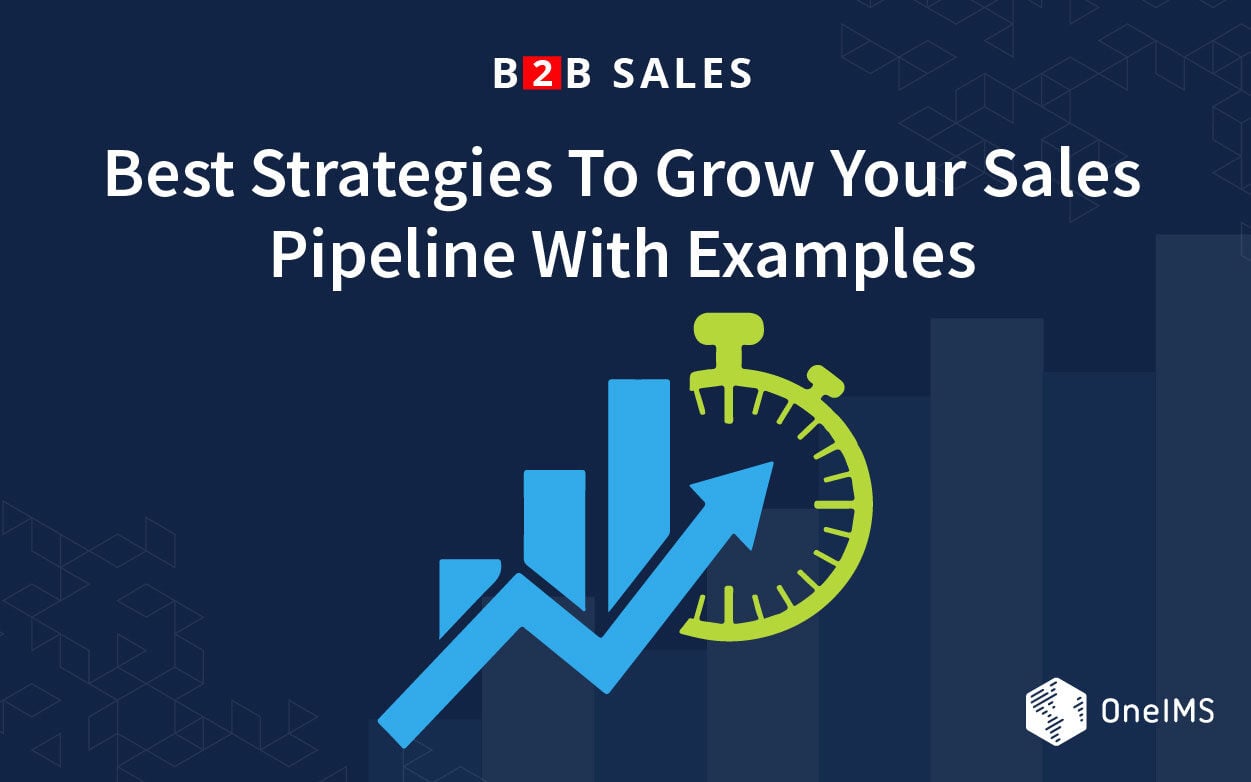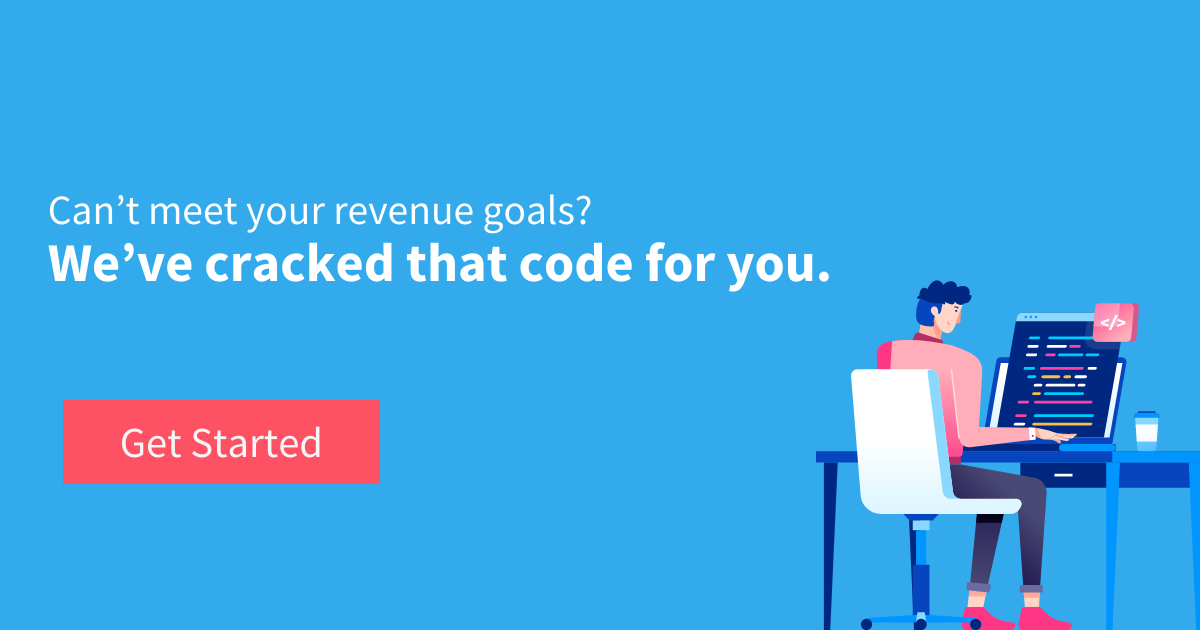Table Of Contents
If you want to sell better to more businesses, I wrote this guide for you.
Here, you’ll discover how AXWAY, Salesforce, HubSpot, Dropbox, and other B2B companies leveraged digital marketing strategies to grow B2B sales conversion by over 1,100%.
In fact, Dell generated an average of $265,000 in additional revenue every week after implementing the sales strategies you’re about to learn.
It’s no longer a secret that selling to other businesses is tricky. You have to take B2B selling for what it is if you want to see significant results.
It’s a high-stakes selling game that must be approached in a unique way as compared to direct-to-consumer selling.
When properly executed, B2B sales have the potential to be very profitable and deeply rewarding.
In B2B selling, you aren’t trying to capture every audience out there. No, that’s a wrong approach because no every business will perceive the value in your offer.
According to a study conducted by Marc Wayshak, a Sales Research & Insights Institute, “at least 50% of your prospects aren’t a good fit for what you’re selling.”
As the competition is now stronger than ever, your B2B sales team have a lot of work to do. Marketing needs to be actively engaging for every potential client no matter the stage they’re in the sales funnel. Why?
Because today’s B2B buyers have changed. They now have a wealth of information at their fingertips. They’re also busy so they want solutions no gimmicks.
This is the best time to educate and inspire potential clients. No, you’re not shoving product-centered content down their throat, that would lead to a major disconnect.
It’s about providing answers to their questions and creating the best experience they’ll never get elsewhere.
Learn powerful strategies you can implement right away to grow your sales pipeline, coupled with real-world examples and case studies from insiders who constantly close huge B2B sales.
If you religiously implement these account-based selling techniques, you’ll be on your way to closing more B2B sales.
What’s “B2B Sales?”
Selling is relationship building, it’s all about trust” — Gerhard Gschwandtner
B2B Sales is the process of finding a need that businesses have and meeting that need with your product.
In other words, sales encompass every effort geared towards selling products and services to business, rather than direct to individual customers (B2C).
There’s usually higher order value for B2B sales, longer sales cycle, and are more complex than B2C sales. The chart below illustrates the typical B2B sales cycle length:

Even though the B2B sales cycle is longer than B2C, you can use persuasion and curiosity to shorten this cycle.
Robert Cialdini, professional of psychology and marketing at Arizona State University identifies with the six scientific principles of persuasion such as Reciprocity, Commitment, Social Proof, Authority, Liking, and Scarcity.
Being able to weave these persuasive techniques into your sales messaging can make a world of difference and increase the number of purchases you get per day/week.
B2B Sales Process: Why It’s Important
As you optimize your B2B sales process, it’d translate directly into more sales and more revenue. Here’s the reality: when you’re able to creatively present and position your product to engage potential clients, the more deals and sales you’ll close.
This illustration shows how to accelerate your B2B buying process:
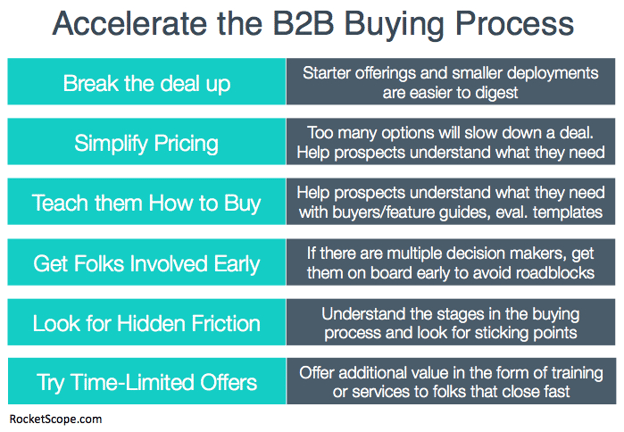
Bear in mind, though, that while a B2B sales process should be repeatable for achieving maximum success, no two clients are created exactly the same.
More so, your sales processes should be aligned to suit a segment of your target market.
Truth be told, there’s no need trying every trick in the book to get a business to buy from you. It’s never going to happen overnight, but as you continually implement the tips in this guide, you’ll develop a profitable B2B sales process.
How Do You Make a B2B Sale? 5 Steps B2B Selling Process
Making a B2B sale can be straightforward for some business but daunting for other businesses. It all depends on how effective their processes are.
That’s why it’s important to invest adequate time to implement these five steps to refine your B2B sales process:
Step #1: Thorough Research
To successfully refine your sales process, you need to thoroughly study your market. You want to know the company size, how they visited your website and the pages they landed on. Don’t be naive to prospect’s needs.

They might even call you on out of the blue, whatever the case, start researching them while they’re still talking with you on the phone.
Even though it can be difficult and complicated to generate targeted leads these days, due to competition, understanding what their challenges truly are is a lot easier today.
Once you’ve nailed the research phase, the next steps will likely fall in place.
Step #2: Ask The Right Questions
When it comes to making your sales process work, you need to ask the right questions. More often than not, these should be open-ended questions. It’s a marketing trap to assume you know a lot about your prospective customer — always ask.
If you’re able to gather a lot of information about their needs, likes, dislikes, and struggles, you’ll be in a better position to close a sale. After all, they know you care about them.
Ask questions that prompt open and in-depth responses. As much as possible, avoid yes/no questions that can shut down a conversation.

For example, instead of asking “do you run Facebook ads?” ask this instead, “what online advertising channels work for you?”
The first question will likely get a “Yes” or “No” response while the second question will cause the person to think and give you helpful feedback.
Trust me, you need customer feedback to constantly improve your sales process, you don’t need a direct answer. It doesn’t work.
Step #3: Listen More
Listening can be powerful. Once you ask questions, don’t interrupt the feedback. Listen. Instead of thinking about what your next question will be, reiterate what the person has said.
It makes the prospect feel at home, knowing you care about them.
When communicating with a potential client, aim to do only 30% of the talking. This may sound weird at first, but you’ll get a better close rate.
Step #4: Teach What You Know
In the words of Michael Stelzner:
You don’t want to be pushy with your product. Most people are turned off by this and build a wall straight away, even if they’re interested.”
In modern times, the best way to pitch your product idea is by teaching. While listening to the target audience, look out for opportunities to explain a term, define a concept, or teach them what they’re struggling with.
Teaching brings education down to the average person. Even though you’re marketing to professionals, you may be surprised to know that they’re looking for beginner-friendly answers.
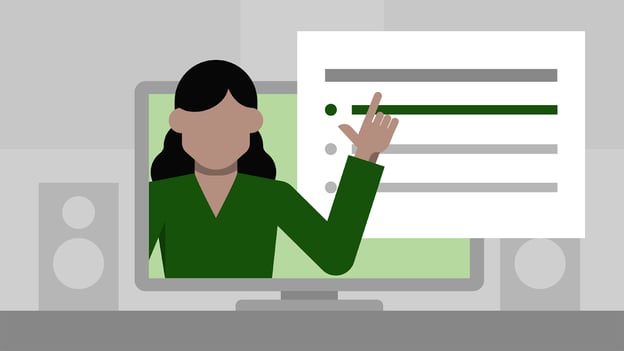
When you teach what you know to the buyer, it helps them to discover exactly what they want, which may be different from what they need.
When you help the customer to learn a new thing that will help them, the psychological power of reciprocity takes over.
It promotes brand loyalty. Don’t blatantly talk about your own product or services when you teach business owners, CEOs, and top-level executives. It’s always about the user, and not about your product.
Brian Clark turned a simple blog into a $7 million dollars online venture by teaching content marketing. He kept dishing out helpful information at no cost for years. Eventually, he became a thought leader and now heads Copyblogger Media, a multi-million dollar digital company.
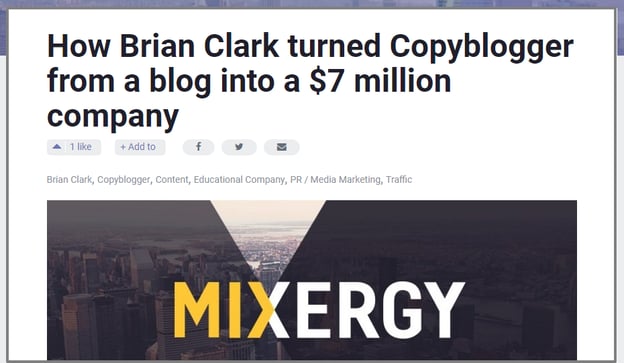
Step #5: Close the sale
Don’t forget to close the sale. Once you’ve convinced the prospect enough with your captivating story and content, it’s time to take the hardest step of the B2B sales process, which is closing the sale.
It’s pretty easy to close the sale if you have successfully implemented the preceding steps; your efforts will likely result in a sale. Although the best plans may fail, you can always refine it to close the sale faster.
As a general rule, if your prospect isn’t convinced to take the plunge in this step, don’t hesitate to repeat the previous four steps. I’m sure you’d nail it this time around.
The Difference Between B2B Sales and B2C Sales
When you’re just getting started with sales, you need a strategy that fits your business. With that in mind, the most important step you can take is to distinguish between B2B and B2C.
Well, depending on your prospective customers and market, Here are some key differences to keep in mind.
i). It involves a longer sales cycle and multiple decision makers: We’ve established earlier that business to business, or B2B sales is primarily the art of selling products and services to businesses.
Examples, Salesforce, HubSpot, CRM software providers, email service providers, etc.
Of course, there’s always an overlap: where the company is selling to both businesses and individual customers.
B2C companies, on the other hand, are selling directly to individual customers. E.g., Amazon, eBay, and so on.
ii). When you’re selling to businesses, you’re expected to develop a relationship that will drive the sales when the decision makers eventually decide to buy from your brand.
Because it’s going to take a while. Yes, the processes involved in closing a B2B sale is lengthier.
Even at that, B2B buyers want more value for their spend. That’s why they compare two or more products to gauge the ‘value’ delivered by each product. According to the Harvard Business Review, “Businesses that buy from you can become loyal customers if you offer more value than the competition.”
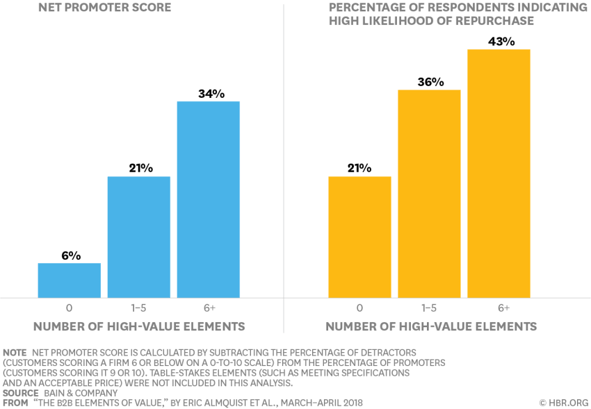
Did I also tell you that B2B sales thrive when the decision makers agree to use your product?
It requires more than one person ‘deciding’ what should be done or what product/solution the company needs to buy. Yes, it does!
iii). The B2C sales cycle is shorter since the consumer can purchase the product on the spot, without having to call a meeting or rely on a Boss.
In addition, B2C products and services and arguably cheaper. Hence, there’s a little financial commitment on the part of the buyer.
B2B Sales Software: Our Top 5 Essential Tools to Automate Your Sales Process
So when you’re ready to take your B2B sales by the horn and succeed, you need to leverage the right tools. These software tools are a requirement if you ever want to generate more qualified prospects and close more deals.
With so many tools to choose from, how do you know which ones are best for your business?
Although every business might have a unique need they want to meet, which would require various sales tools, here’s a list of 5 tools everyone in B2B sales should use:
1). LinkedIn Sales Navigator
LinkedIn is a powerful social media network for growing your B2B sales. It’s a network that’s primarily designed for professionals.
It’s quite different from Facebook, Twitter, Instagram, and the like. It’ll make your B2B sales process a lot easier to execute when your social media marketing is an integral part of your strategy.
There are millions of company information and employee information on LinkedIn. That’s why you should use it to build relationships in your niche.
There’s a specific sales feature popularly known as the Sales Navigator. You seriously need to get acquainted with it.With the LinkedIn Sales Navigator, you can connect to professionals, save targeted leads, and create a sales lead list that will help you to focus on qualified buyers.
With this sales tool, you have access to a sophisticated algorithm that gives you lead recommendations that are tailored to you. With this sales feature + LinkedIn itself, you can connect to your target audience for the purpose of generating B2B sales.
SAP increased sales pipeline by more than 40% and generated several individual deals of $300,000 or more. That’s about $4 million dollars in revenue, courtesy of the Sales Navigator.
2). Unbounce
Most businesses need a landing page to drive B2B sales. They just can’t do without it. Honestly, there are easy-to-use landing page builders around.
One of our favorites is Unbounce.
Unbounce has been around for a long time. This software allows you to build optimized landing pages to drive your sales campaign.
It comes with optional pop-ups, contact information, web forms, and social media integrations. More importantly, all their templates are mobile-responsive.
The team at Unbounce ensure that all the landing pages are secured with the latest SSL encryption.
The good part; you don’t have to write a single line of code. Its drag-and-drop feature makes it pretty easy to design a high-converting landing page in a few minutes, test it, deploy it, and A/B test several elements to improve conversions.
We haven’t seen a successful B2B sales process that doesn’t make use of multiple landing pages. That’s why Unbounce is an absolute choice for every B2B strategy.
Good products come with a price. Unbounce isn’t cheap, it starts at $79 per month. The value is well worth the price, especially if you compare that with the cost of hiring a web developer to customize your landing page from scratch.
3). Attach.io
As you develop your B2B sales plan, one of the tasks you’ll find your team doing every other day is reaching out to businesses and executives.
This would consist of cold emails, social media messaging, and so on. You’ll be sending attachments alongside your emails.
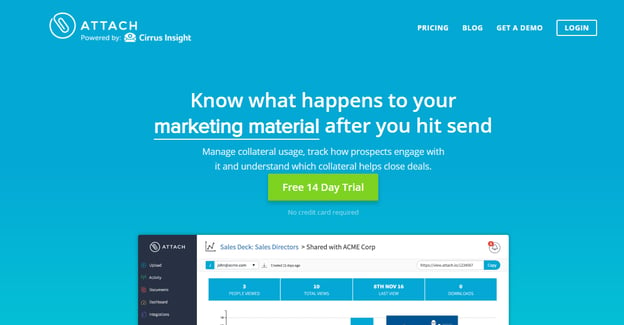
How do you track opened emails, engaged emails, and do you even have a system in place to know when a potential client opens your proposal?
If you think this is important, then you need a handy tool. Attach.io is that tool that you can use to track everything that happens once you press that ‘send’ button.
Attach.io uses social curiosity which is popular on platforms like Facebook Messenger and iMessage (“It says he got this 3 days ago! Why the heck hasn’t she responded?!”).
It brings this opportunity into your B2B space. Use this tool to track what email attachments get opened and viewed and even the exact pages of a PDF that gets read.
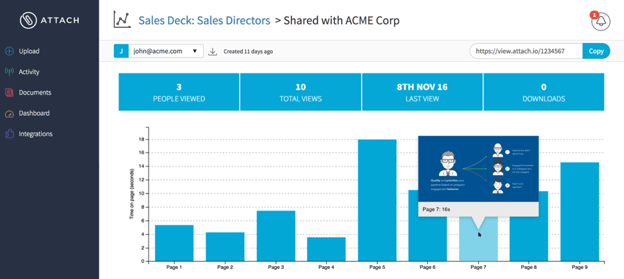
When you find a tool that provides a wealth of insights, you should stick to it.
And this has nothing to do with feeding into the social anxieties that are driving people crazy on the web, but it gives the best insights about your prospects or leads that are engaging with you.
Attach.io starts at $9/month. This basic plan should do if you need basic data about the recipient’s engagements. To get custom branding and analytics dashboard which are more comprehensive, you’ll need an upgraded plan.
4). Close.io
Sales professionals can leverage Close.io to power their sales process. It’s a CRM-based software that’s useful when you want to effectively track your campaigns.
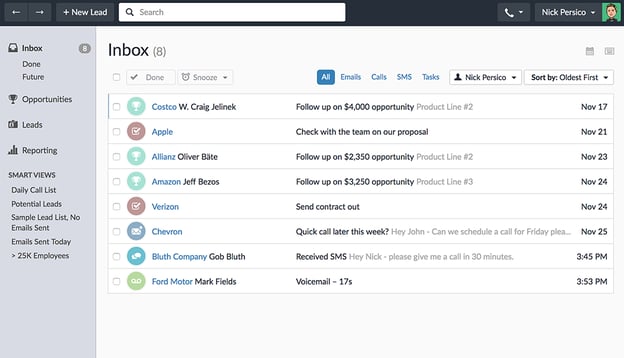
You can get started quickly. You can track your calls, emails, and tasks on a central dashboard.
It also integrates with other platforms such as Zendesk or HipChat which most businesses are also using.
Use it when you want to improve your sales productivity and get useful data for making informed decisions. You can start off with the 14-day free trial. Or upgrade to a paid plan at $65/month.
5). Salesmate CRM
Salesmate CRM is your best shot when you’re on a tight budget but still want a software that will meet your need. It comes with a 15-day free trial, however, paid plans start at $12 per month.
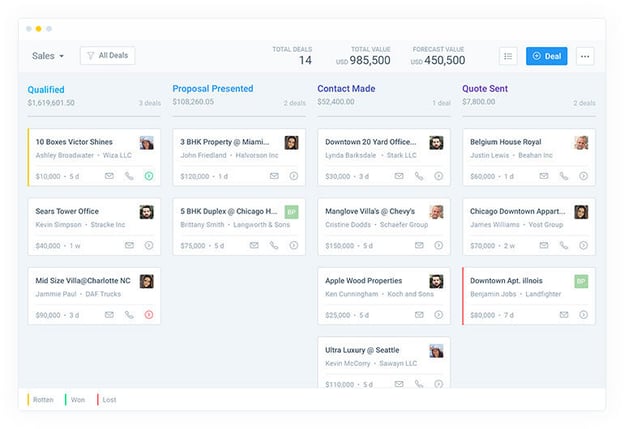
Use Salesmate to eliminate the ‘busywork’ associated with B2B sales processes and leverage powerful sales techniques to win more deals and close sales. You also get a personalized experience for your clients when you use this tool.
The core features like contact management, customization options, a mobile-experience, a visual pipeline, and so on, are all designed to help you maximize your sales.
B2B Sales Strategies and Tactics
This is the part you’re probably waiting for. You want to finally implement the strategies that will drive B2B sales.
Yes, the B2B sales strategies and tactics below are all proven to work, as you’d see from the case studies and real-world examples. But sales itself is full of uncertainty: full of desirable highs and frustrating lows.
But don’t quit when you don’t get the sales in a few days. Keep pushing because the joy that comes from closing a huge sale that’s taken months will put springs in your steps.
You’ll feel on top of the world.
Seeing that Sales team of any company are responsible for increasing sales, these actionable strategies can help you along the way:
1. Turn Employees into Brand Ambassadors
It’s always good to start from where you are. Instead of trying to convince your clients to refer new clients to you, why not begin with your marketing and sales team?
These highly skilled individuals are a goldmine. Never ignore them.

Closing any sale begins with the right education. If the client is educated enough by your messaging, storytelling, visuals, or lead magnets, you’ve already trounced a huge B2B sales challenge.
Once you have the right content in your sales funnel, you know you’re ready to receive as many leads as possible. And they’ll not be disappointed.
Your employees (sales, marketing, customer service) are already experts in their fields, so give them the opportunity to define it.
GE had a $0 budget for marketing but it had 350,000 trained colleagues and staff strength around the globe. By leveraging its trained employees as ambassadors to better tell GE’s story, the company saw an engagement worth $3 million and 800% in applicants.
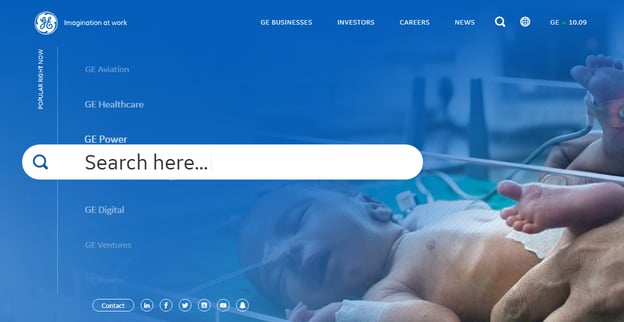
Here’s why you should tap into your employees:
Modern B2B buyer’s behavior has changed a lot. In fact, potential clients no longer want to read sales or marketing messages. But rather, they want helpful content.
What potential clients want is a personalized experienced. They want to interact with your brand and salespeople that provide relevant information. These people must listen to them first.
Rather than sharing promotional content, imagine how excited and persuaded the prospect/client would be if they get to read insightful content that addresses their pain points from your sales team.
So how can you achieve it?
Simple: Encourage your employees to create content based on the feedback they received from the client. They can share this content on social media, blogs, email, and they can equally repost it on their LinkedIn profile.
Successful brands that generate lots of B2B sales do this all the time. Stein Ove Sektnan, Managing Director at SuperOffice UAB is a great example. Since 2014 he’s been sharing original content on LinkedIn.
He’s very strategic with his content. Because the majority of them covers customer service, CRM, data management, customer experience, and strategy – all relevant to his company’s product.
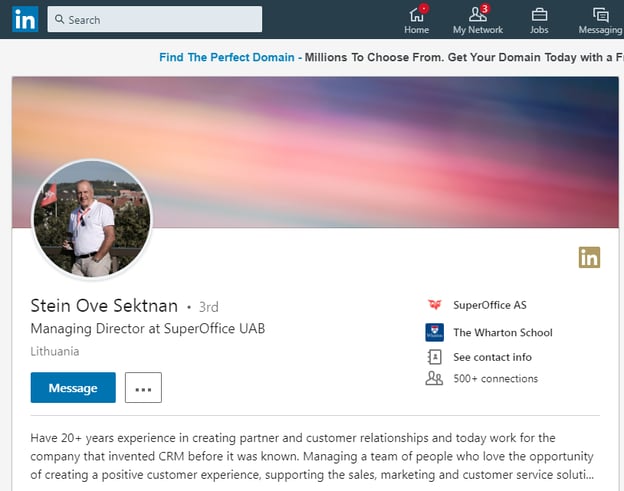
In one of his posts on customer complaints, 46 persons liked it and 15 shared it.
When we based on metrics on the average number of LinkedIn connections (approx. 900), we see that his post was seen by 50,000 people!

To get your sales team, marketing team, customer service team, and other employees to become brand ambassadors at no cost, you need to educate and inspire them.
The truth is that employees may not always have time to dedicate to your brand – unless you give them a reason. They might even feel it’s a chore sharing your content.
So you must make the process fun.
For example, if you want them to tweet your best content, then add a tweetable link and hashtag to it. Make sure the social buttons are easy to find. Don’t assume that employees will remember where the buttons are.
There’s even more. Explain to your employees why they should share the content. Let them know why the target audience needs to read it.
Do you want them to share your company’s recent achievements? If yes, then make the headlines tweet-worthy.
2. Collect Honest Feedback
Your B2B sales’ success relies on feedback from your target audience. Whether you get the feedback through polls, surveys, in-person interactions, social feedback, or email, it’s essential for improving your sales funnel.
Remember that getting in-depth and useful feedback from clients is a difficult task. The rules aren’t set on a stone. You just have to be transparent with your clients to get it.
More so, automating the process can really be beneficial, as it’d encourage your clients to provide you with more feedback since they don’t have to do it manually.
Aside from that, the traditional approach still works. Just talk to your clients and ask for their honest feedback.

What do they like or dislike about your product? Does the number of steps they took to become a customer overwhelm them? Ask them why they chose to buy from you; what caught their attention?
Essentially, you want to ask them open-ended questions as this would put them in a positive frame of mind, according to a research conducted by five Institutions (Utah State, Boston College, Michigan State, Northeastern, and Brigham Young University).
The team went a bit further with their experiment. They asked a total sample of more than 27,000 customers open-ended questions.
After incorporating their feedback into the product, it improved sales tremendously. In fact, customers who give positive open-ended feedback spent an average of $143.16 in the next year.
B2B companies like Dropbox, Volusion, Infusionsoft, and other online solutions provider takes customer feedback seriously.
They always send out surveys, use in-person interactions, and create automated systems to learn more about their customer. If you do this, you’ll most assuredly boost your sales.
3. Become a Trusted Advisor
Thought leaders are trusted because they share valuable information, and most times, they don’t charge for it.
The earlier you start positioning yourself and your company as a thought leader and trusted advisor, the quicker your customers will feel obliged to buy from you.
You also want to train your team so they are essentially perceived as true experts in their fields. For example, if your company is selling email marketing solution, then learn everything about your product.
As you can see in the chart below; a trusted advisor closes the talent gap. A trusted advisor acts as a middleman between the brand and the customer. It doesn’t matter the industry, the rewards will be worth the effort.
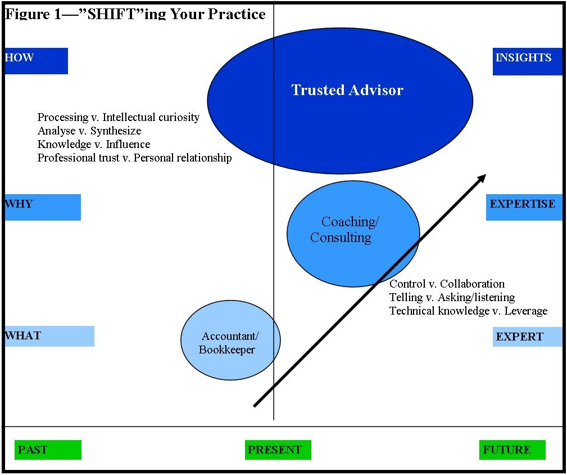
Then make up your mind to share everything you know about your product (without being promotional) for free.
This is a great way to facilitate confidence and give customers, who are still on the sidelines, the chance to try your products. Don’t hoard your best information.
Marketing professionals like Jay Baer, Chris Brogan, Michael Stelzner, Neil Patel, all share their premium content at no charge. Don’t worry, when it comes to increasing revenue, you’ll find an angle to create a product on.
4. Qualify With Care
For the businesses you’re reaching out to, how do you know they’re going to buy from you? Is it a numbers game or can you be certain?
Well, there are steps you can take to qualify your target audience even before you present your offer.
Of course, they need to have the resources to buy your product but you need to be sure that they have challenges your product solves.
A good way to show the prospect you care is by educating them, listening to them, using their language, and explaining the exact problems they as an organization is likely facing, and how purchasing your product can fix it.
That’s a bold claim, but you should stand by it if you trust your product.
There are several ways to qualify leads. BigFix, an IT company that serves businesses used surveys to qualify leads and this has resulted in sales worth millions for the company.
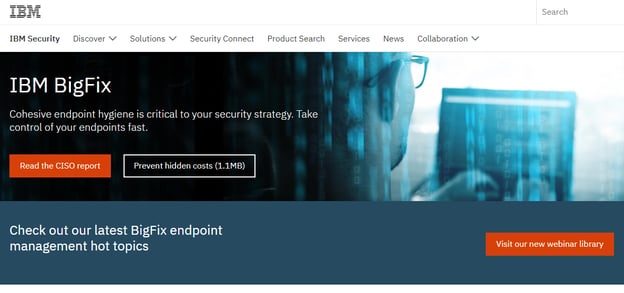
Make sure you know where every single node of the purchase stands, and use this approach to qualify with care. You’ll gain qualified leads that will not only buy from you but will also refer others your way.
When you’re concerned about marketing to qualified leads, you’ll be miles ahead of your competitors that brush over or forget it. As you create qualified leads, you’ll see your business closing better deals, worth a lot more in revenue.
5. Set and Stick To Your Prices
A lot of salespeople cower when there’s an objection in the marketplace regarding their pricing. Consequently, they lose their sale, without even realizing.
They might even get the prospect to buy, but the product would have been sold for half of its value, just to get the prospect excited.
Business to business model relies on the thick skin. Your sales team must be confident and ready to stand by their prices. Sure, always listen to the customers — but insist that your product or service is worth good money.
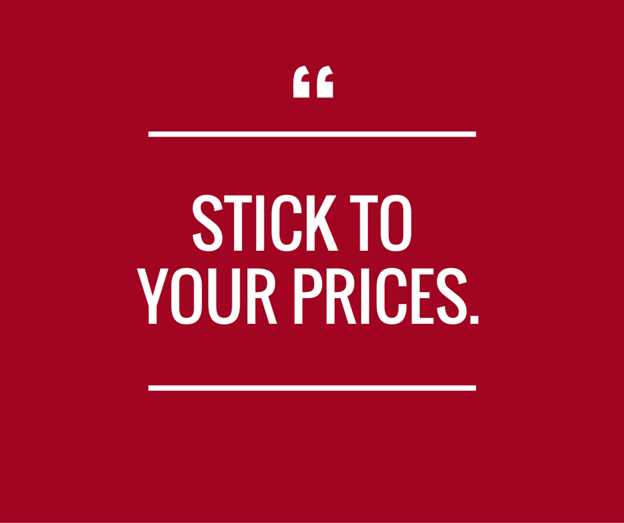
Remember that you aren’t marketing to everyone and their mom. You have an ideal audience. By the time you attract this group of people, they will NEVER have issues with your pricing — because what they care about is ‘value.’
Always remember that the moment you defeated or doubt your own prices, you’ve lost your true essence and the power you hold.
When that happens, the prospect will see through your weakness and will negotiate until you succumb to their own terms.
But if on the other hand, you create a lot of value and educate the customer, then they’ll yearn and desperately desire your product. And guess what? They’ll come for it and meet you on price.
This strategy works especially when you’re selling high-ticket products. It’ll help you close bigger deals consistently, with better quality customers. Why make 10 small sales for $500 each, when you could cut to the chase and make 1 big sale of $10,000?
In most cases, it takes the same amount of work, persuasion, and time. So why not save time as well as generate more money for your business? It’s a win-win situation!
6. Close the Sale
There’s no better B2B sales tactic than this:
Close the sale.
There’s a popular mantra used by salespeople: ‘Always be closing’. It’s the most striking step you can take to get what you want.
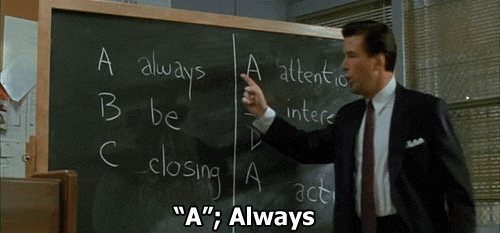
At every touch point and customer journey, you have a chance to close/engage the client into business. No, you don’t have to be pushy or desperate for the sale, but don’t neglect it.
Closing a sale doesn’t have to be a ‘sale’, it can include arranging a meeting, or prompting for an opt-in, or asking for their consent to send a sample. As you build the relationship, don’t lose sight of the end goal.
How To Pitch a B2B Sale?
Sales pitches or Elevator pitches are important. As the name implies, it means you can tell your brand story in the same amount of time it takes you to ride an elevator with a prospect. That’s about 1-2 minutes.
Within this short time, it’s important to respond to your customers’ identified needs first.
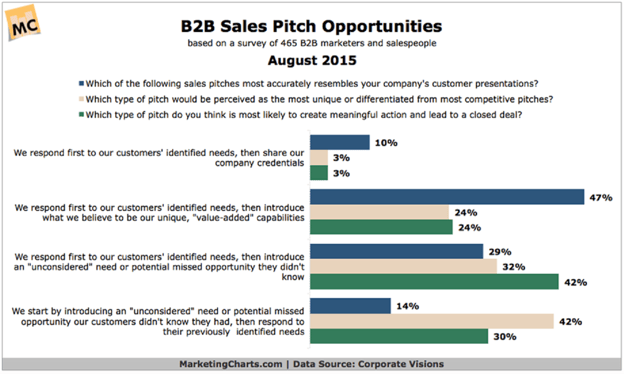
As a salesperson, you don’t want to waste people’s time with an hour-long presentation to sell products or services.
Our attention span is going down, and to be honest if you need an hour to convey what your product stands for, your sales process is wrong.
The Sales Pitch Framework
This is mostly basic, but you can expand and add more nuggets to the conversation, address points of interest. Use this framework to build a captivating elevator pitch:
-
Problem: Begin with the main challenge or problem you can solve and share credible and relevant statistics and trends. Address the why.
-
Value Statement: Make sure your statement of value is clear and concise. Focus on the outcome the prospect will get. Highlight the benefits. Don’t use jargon.
-
How We’re Different: What are your unique differentiators and how does it differ from the competition?
-
Show Proofs: A prospect who’s interested in your offer doesn’t want to be the first. They want examples, recognizable achievements, industry validation and awards, customer testimonials.
-
Engaging Question: As I’ve stated earlier, always close your elevator pitch with an open-ended question that will trigger a conversation.
Final thoughts
Studying your audience, listening to them, collecting and acting on feedback is necessary if you want to ‘ever’ provide customers with the product they need.
You can’t afford to assume they’ll need a particular feature when none of your ideal customers have indicated any interest.
Imagine how much sales you’d generate if you’re able to measure and ascertain exactly what the prospects and customers want before creating content and products to meet this need. Your sales pipeline will go off the hook.

